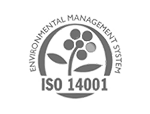The future of environmentally friendly transport is moving toward integrated solutions that combine cleaner vehicles, alternative fuels, and optimized logistics networks. Sustainable transport will increasingly rely on intermodal systems that connect rail, road, and sea transport efficiently while reducing emissions. Technology advancements in electric and hydrogen-powered vehicles, along with digitalization of logistics operations, are driving this evolution. Companies are adopting these solutions not only for environmental benefits but also to achieve cost efficiencies and meet growing regulatory requirements.
What are the biggest challenges in creating environmentally friendly transport solutions?
The primary challenges in developing environmentally friendly transport solutions include high initial investment costs, limited infrastructure, and the complexity of integrating new technologies with existing systems. Transport companies face significant expenses when upgrading to energy-efficient trucks or implementing sustainable fuel alternatives, often requiring substantial capital that can be difficult to justify in the short term.
Infrastructure limitations present another major obstacle. Alternative fuel stations, charging networks for electric vehicles, and intermodal transport connections remain underdeveloped in many regions. This creates practical difficulties for companies wanting to implement greener transport options while maintaining reliable service across diverse routes and destinations.
Operational challenges also emerge when transitioning to sustainable practices. Driver training for new vehicle technologies, adapting maintenance procedures, and optimizing routes for environmental efficiency all require careful planning and resources. The transition period often involves running parallel systems, which can temporarily increase complexity and costs before the full benefits are realized.
Regulatory frameworks add another layer of complexity, as environmental standards and emissions regulations vary across different countries and regions. For transport companies operating internationally, this creates a patchwork of requirements that can be difficult to navigate while maintaining operational efficiency.
How is technology transforming environmentally friendly transport?
Technology is revolutionizing sustainable transport through advances in vehicle design, alternative power systems, and digital logistics management. Electric and hydrogen-powered vehicles are becoming increasingly viable options, with improved range capabilities and reduced operational costs making them practical alternatives to traditional diesel-powered trucks.
Trucks with improved aerodynamics are delivering significant fuel savings without requiring complete fleet replacement. Design innovations include adjustable roof spoilers, side skirts, and optimized trailer shapes that reduce air resistance and improve fuel efficiency by 5-15% depending on operating conditions and implementation.
Digital systems are transforming how transport companies plan and execute deliveries. Advanced route optimization software now incorporates environmental factors alongside traditional considerations like time and distance. These systems can calculate the most fuel-efficient routes, considering factors such as traffic patterns, road gradients, and vehicle-specific performance data.
Intermodal transport technology is becoming more sophisticated, enabling smoother transfers between road, rail, and sea shipping. Standardized loading units, improved tracking systems, and automated handling equipment are making it easier to choose the most environmentally efficient combination of transport methods for different stages of a journey.
Telematics and driver assistance technologies are helping to optimize driving behavior for reduced fuel consumption. Real-time feedback systems guide drivers toward more efficient acceleration, braking, and speed maintenance, while collecting data that helps companies identify further opportunities for environmental improvements.
What benefits do companies gain from adopting green transport practices?
Companies implementing environmentally friendly transport solutions gain several competitive advantages, including cost reductions, improved regulatory compliance, and enhanced brand reputation. While sustainable transport often requires initial investment, it typically delivers long-term cost savings through reduced fuel consumption, lower maintenance requirements, and decreased exposure to fuel price volatility.
Regulatory compliance becomes more straightforward with green transport systems. As environmental regulations become increasingly stringent across Europe and globally, companies with sustainable transport operations are better positioned to meet current requirements and adapt to future changes without disruptive adjustments.
Customer relationships often strengthen when companies demonstrate environmental responsibility. Many businesses now include sustainability criteria in their supplier selection process, making green transport capabilities a competitive advantage when securing contracts with environmentally conscious clients.
Operational resilience improves through diversified energy sources and transport methods. Companies using flexible transport solutions and multiple energy types are less vulnerable to disruptions in specific fuel markets or transport modes, helping ensure business continuity in changing circumstances.
Employee satisfaction and recruitment advantages also emerge, as staff increasingly value working for environmentally responsible organizations. Transport companies with clear sustainability commitments often find it easier to attract and retain qualified drivers and logistics specialists in a competitive labor market.
How can transport companies balance environmental goals with business needs?
Transport companies can effectively balance environmental and business objectives by taking a phased approach to implementation, focusing on efficiency improvements, and leveraging partnerships strategically. Rather than attempting complete system overhauls, successful companies typically implement sustainable practices incrementally, prioritizing changes that offer both environmental and economic benefits.
Starting with efficiency optimization delivers immediate benefits without requiring massive investment. This includes driver training programs focused on fuel-efficient driving techniques, aerodynamic vehicle modifications, and route optimization to reduce empty miles. These measures typically pay for themselves through reduced fuel consumption while cutting emissions.
Developing flexible transport systems helps companies adapt to various client needs while maintaining environmental standards. This often involves creating intermodal transport capabilities that can combine road, rail, and sea shipping as needed, allowing companies to choose the most appropriate balance of speed, cost, and environmental impact for each shipment.
Strategic partnerships with infrastructure providers, vehicle manufacturers, and even other transport companies can help distribute the costs and risks of environmental investments. Shared resources and collaborative approaches make sustainability more accessible while maintaining competitive service levels.
Data-driven decision making enables companies to identify the most impactful environmental improvements for their specific operations. By collecting and analyzing operational data, transport providers can target their sustainability efforts toward areas offering the greatest combined environmental and business benefits.
At Powder-Trans, we understand these challenges firsthand. With over 50 years of experience in specialized bulk transport, we’ve learned that environmental responsibility and business success can go hand in hand when approached thoughtfully. Our ongoing investment in modern, efficient vehicles and optimized logistics systems demonstrates that sustainable transport is not just about meeting regulations—it’s about building a resilient business for the future.






